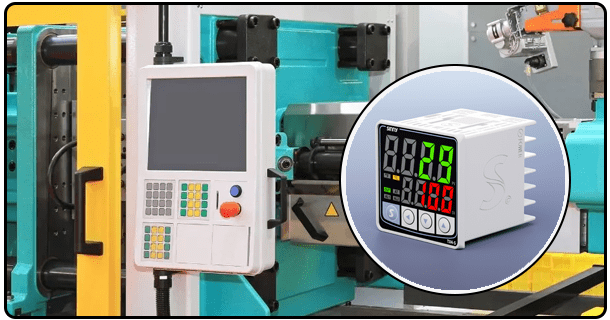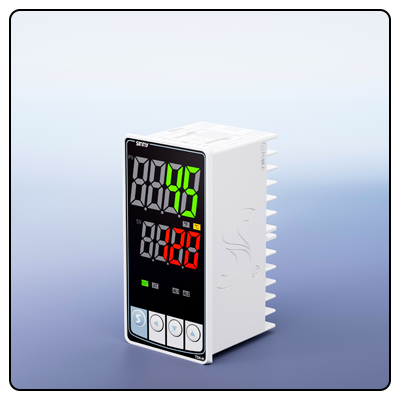How To Choose A Digital Temperature Controller?
"Enter the realm of precise temperature management with our expert advice on selecting an efficient, dependable digital temperature controller to meet your exact requirements, guaranteeing efficiency and dependability".
Selecting the most appropriate digital temperature controller for your application is an important decision that can have lasting ramifications for its efficiency and reliability of temperature-sensitive processes. This comprehensive guide will outline key considerations and steps necessary for selecting an ideal digital temperature controller to meet your specific requirements.
1. Finding a Digital Temperature Controller: A Comprehensive Guide
Temperature control is an integral component of industrial, commercial and residential applications alike. From manufacturing processes that demand precise temperature regulation to maintaining comfort levels in homes and offices alike, temperature regulation cannot be understated in its importance. Digital temperature controllers have revolutionized how we manage these environments by offering precision, ease of use, reliability as well as many options - but selecting one may seem daunting; hopefully this guide can make that task simpler!
2. Determine Your Control Requirements
First Step in Selecting a Digital Temperature Controller To select an electronic temperature controller effectively, the initial step must be clearly outlining your control requirements. Before making your selection, take some time to think carefully about:
* Temperature Range: To select an effective controller for your application, identify its temperature range of operation. Each controller can accommodate certain ranges; make sure the one you purchase meets all your specifications.
* Precision and Stability: Deliberate on what level of precision will best meet the demands of your process. Some applications require tight control with minimal deviation while others allow more latitude for experimentation and adjustment.
3. Select the Sensor Type
A sensor is a critical element of temperature controllers, serving as the input on which their operations rely. There are two major types of sensors: temperature and moisture sensors.
* Thermocouples: These thermometers excel at high temperatures with rapid response times but tend to be less accurate overall.
* Resistance Temperature Detectors (RTDs): RTDs provide greater accuracy and stability at lower temperature ranges than their alternatives, making them an excellent solution.
Consider what environmental conditions your sensor will be exposed to, such as harsh materials or extreme temperatures, before selecting one which can withstand these environments.
4. Determine the Temperature Controller Type
Digital temperature controllers come in various types that cater for various uses; here's what to know before choosing.
* On/Off Temperature Controllers:
They are designed for applications where precise control is not a must. They feature simple on/off switches which offer reliable power source switching when precise control isn't a must.
* PID Temperature Controllers:
They offer precise temperature regulation with reduced overshoot, making them the ideal solution for processes requiring tight temperature regulation.
*Autotune Temperature Controllers:
These controllers automatically adjust PID settings for optimal performance, simplifying setup.
Consider Output Type
The output type is what drives heating or cooling elements within the controller, such as fans. Common examples of output types may include:
* Electromechanical relays:
Electromechanical relays can provide simple on/off control but may wear faster due to moving parts.
* Slid State Relays (SSRs):
SSRs provide faster switching times and longer lifespan without moving parts, offering maximum switching efficiency at all times.
* Analog Outputs:
These outputs can be used to control variable-speed drives or proportional valves that facilitate gradual temperature adjustments.
Match the output type to the control elements you are employing - for instance heaters, fans or chillers - when selecting an output type.
Check for Additional Features
Modern digital temperature controllers feature many extras that can enhance functionality:
* Alarms and Limits:
Look for controllers equipped with alarms to notify of high/low temperature events.
* Connectivity:
Certain controllers offer network or computer connections for remote monitoring and control, making remote surveillance more practical than ever.
* User Interface:
For simpler programming and adjustments, having an user-friendly interface can make programming and adjustments significantly simpler.
5. Check Environmental Durability
Before choosing a controller, ensure it can withstand your operating environment - including factors like ambient temperature, dust accumulation and other environmental elements which might impede its performance.
Review Safety Features
Safety should never be forgotten. Utilizing features like sensor break detection can protect both equipment and personnel by either shutting down a system if a sensor breaks, or by raising an alarm if one malfunctions and triggers.
Size and Mounting Options When Selecting Your Controller
Space limitations should play into your decision of controller purchase. Carefully evaluate its size as well as available mounting options like panel or DIN rail mount before making your selection to make sure it will fit seamlessly within your environment.
Plan for Future Scalability
Your needs could change over time, so selecting a controller with enough expansion capabilities to accommodate additional sensors or control loops would be wise.
Budget and Cost Considerations
It is also essential to compare the cost of controllers against features needed by your application, along with total ownership cost (maintenance costs as well as energy efficiencies) before making a selection.
By considering each factor carefully, you can select a digital temperature controller that not only meets your current requirements but can adapt to changing ones as well. Remember that choosing an effective controller can result in significant improvements to process control, energy savings and overall system reliability.























